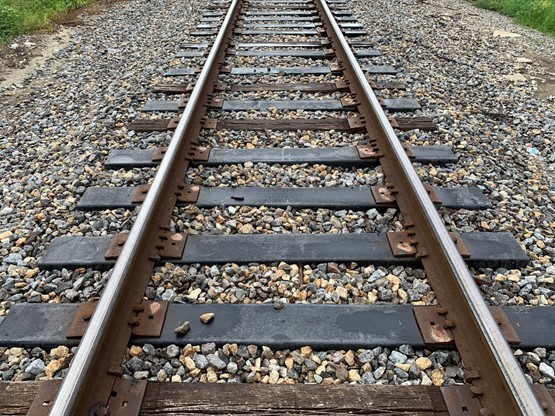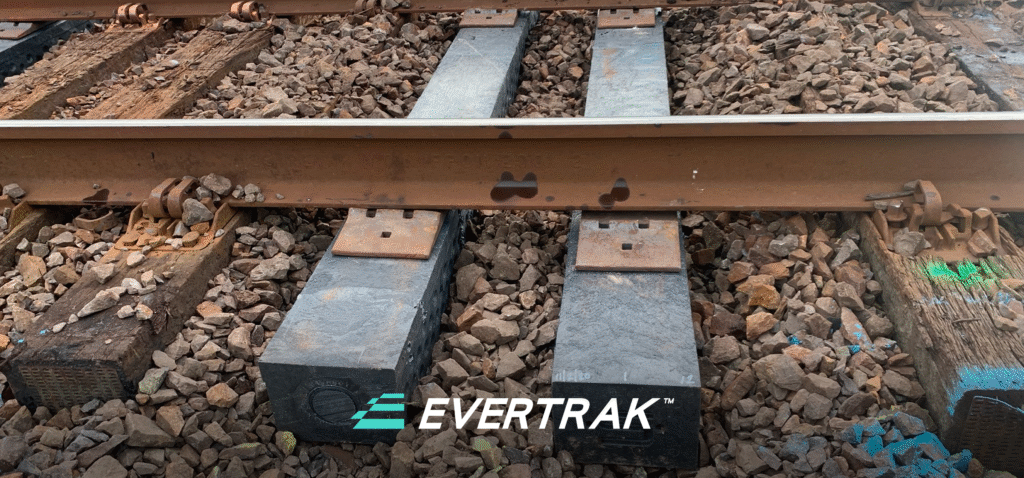Did you know that approximately 21 million wood railroad ties are removed from service each year in the United States? Replacing those ties is essential, but what is put back in their place is also important. That’s why ties comprised of 100 percent recycled plastic and fiber reinforcement are becoming more prevalent. They’re completely moisture-resistant, can be interspersed with wood ties, and are suitable in areas with termite infestations, water intrusion, and soft sub-grades. Plus, they provide a host of advantages for the environment.
If you aren’t aware of the effect of waste and need for utilization of more environmentally-friendly materials in the United States and around the globe, take a look at these statistics:
- The U.S. is the number one trash producing country in the world at 1,609 pounds per person per year – five percent of the world’s population generates 40 percent of its waste.
- Although an estimated 75 percent of the American waste stream is recyclable, only about 30 percent of it is recycled.
- According to the most recent numbers from the Environmental Protection Agency (EPA), the total generation of municipal solid waste (various items consumers throw away after they are used) was 267.8 million tons in 2017, and plastic products generation was 35.4 million tons (13.2 percent), an increase of four million tons from 2010-2017.
- Recycling plastic saves twice as much energy as burning it in an incinerator.
The railroad industry is partially responsible for these unfortunate numbers. That’s because approximately four million wood railroad ties end up in landfills each year. Most of these have been treated with creosote. The Agency for Toxic Substances and Disease Registry notes that creosote can be harmful to a person’s dermal and hepatic systems and might be a human carcinogen.
Many of the rest of railroad ties no longer in service each year– about 17 million – are burned to produce heat and electricity or recycled as landscaping timbers. Some may be used as an alternative fuel in certain high-temperature combustion chambers such as cement kilns or power plant boilers. However, the EPA notes that “creosote is not approved to treat wood for residential use, including landscaping timbers or garden borders.
The Rewards of Recycling
Recycling offers multiple benefits by:
- Reducing the amount of waste sent to landfills and incinerators.
- Conserving natural resources such as timber, water, and minerals.
- Increasing economic security by tapping a domestic source of materials.
- Preventing pollution by reducing the need to collect new raw materials.
- Saving energy.
- Supporting American manufacturing and conserving valuable resources.
- Helping create jobs in the recycling and manufacturing industries in the U.S.
Specifically, a study by the EPA found that recycling and reuse activities in a single year in the U.S. accounted for 757,000 jobs, $36.6 billion in wages and $6.7 billion in tax revenues. That equates to 1.57 jobs, $76,000 in wages and $14,101 in tax revenues for every 1,000 tons of materials recycled.
A Longer-lasting Product Made with Fewer Materials
Railroad ties made of 100 percent reinforced recycled plastic are not only longer-lasting than their wood counterparts, but they’re also as strong as a hardwood. In fact, their lifespan can be five times longer, serving in heavy haul track for 50 years or more. Unlike wood ties, they’re resistant to rotting and insect infestation. Also, because of their durability, resilience, and stability, they’re especially beneficial for hard-to-access and maintain areas like bridges and tunnels.
Fewer materials are utilized to manufacture reinforced recycled plastic railroad ties, meaning natural resources and energy are conserved. Millions of trees can be preserved, and the environment experiences lower levels of extraction and processing. Recycled materials already have undergone refinement and processing, so railroad ties made of recycled plastic don’t have to be thrown away. They may even be used to create another such tie.
Cost-effective Conservation
One ton of recycled plastic saves 5,774-kilowatt-hours (KwH) of energy, 16.3 barrels of oil, 98 million British thermal units (BTU) of energy, and 30 cubic yards of landfill space. Wood railroad ties most often are disposed of at a landfill, contributing to higher greenhouse gases. Though this wasn’t always the case, newer environmental rules designed to decrease the amount of burning chemically-treated wood have contributed to the growing practice. The use of reinforced recycled plastic for railroad ties and many other products assists in the goal of mitigating the harmful effects hazardous waste has on our land and in our oceans.
Railroad ties made of 100 percent reinforced recycled plastic require lower installation, maintenance, and replacement costs. They also save on energy and production costs and offer reduced downtime for railways when installed. Though some think wood ties are a cheaper option, the costs they incur over their more-limited lifespan add up to a more expensive investment.
Evertrak 7000 and the Environment
At Evertrak, we’re committed to using our technology to reclaim the plastic waste headed to oceans and landfills. That’s why we use almost 200 pounds of recycled plastic in each tie we produce. Our patent-pending technology to create true composite railroad ties will divert hundreds of millions of pounds of plastic from the landfill. After decades of service, Evertrak ties will be recycled into new ties. Contact us to learn more.




